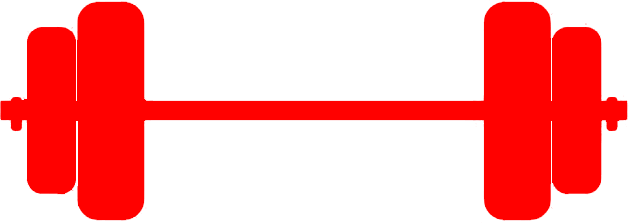What Is Progressive Overload?

When it comes to building strength and boosting fitness, few training principles are as effective and revered as progressive overload. Whether you’re a novice lifter or a seasoned athlete, understanding and applying this concept can help you avoid training plateaus and reach your goals faster.
In this guide, we’ll break down what progressive overload is, how it works, and the best strategies for implementing it.
For great workouts you can do anywhere, sign up for ATU Mobile.

What is Progressive Overload?
Progressive overload is the gradual and purposeful increase of stress on the body during exercise over time. To continue making gains in strength, muscle size, or endurance, you must regularly intensify the demands on your musculoskeletal system.
Think of your body as an adaptation machine. When you expose it to a training stimulus (curling a dumbbell, pressing a barbell, performing intervals, etc.) it adapts to handle that stress more effectively. If you don’t progressively increase the challenge (e.g., by consistently reaching for a heavier weight or increasing your training volume), your progress stalls, and before you know it you’re in a training plateau.
Although it’s most commonly discussed in the context of resistance training, progressive overload applies to any form of exercise, including running, swimming, and cycling. No matter how you work out, the strategy remains the same: as your body adapts to a certain workload, you must increase the intensity, duration, or complexity of it to keep improving.
Methods of Progressive Overload
There are several ways to apply progressive overload in your training program:
1.Increase the Weight
This technique is as simple as reaching for a heavier dumbbell, adding more plates to your barbell, or grabbing a thicker resistance band. For example, if you can comfortably perform 3 sets of 10 reps of 135 pounds in the barbell bench press, you might add a couple more 5-pound plates to the bar to increase the challenge.
2. Increase Training Volume
Another way to apply progressive overload is to increase the total amount of work you do (i.e., your training volume) by banging out more reps or sets. If 3 sets of 10 reps is becoming too easy, try doing 3 sets of 12 reps or 4 sets of 8 to 10 reps using the same weight.
3. Progress the Exercise
This technique involves performing a more advanced variation of a given move. For instance, if you find yourself able to perform seemingly endless reps of the classic pushup, switch to an offset pushup (with one hand elevated on a ball or box).
4. Decrease Rest Periods
Reducing the amount of rest you take between sets limits your muscles’ ability to recover, increasing exercise intensity—and the adaptation stimulus.
When to Apply Progressive Overload
Some trainers rely on the “Two for Two” rule: If you can bang out two extra reps in your final set of an exercise for two consecutive workouts, it’s time to increase the challenge. But generally you just should focus on how you feel during your second and third sets. If you find yourself so comfortable with the current weight that you feel like you could easily bang out more reps, it’s time to go heavier.
In practice, that generally means switching things up every couple of months, although if you’re just beginning your strength training journey, you might need to do so more frequently. Also, if you ever find yourself stuck at a certain weight in any exercise for more than a few months, you know it’s time for a change because you’ve likely hit a plateau. You might not be able to reach for a bigger dumbbell, but as explained above, there’s more than one way to elevate the challenge.
Common Mistakes to Avoid
While progressive overload is a powerful training technique, it’s important to avoid these pitfalls:
Overtraining
Increasing intensity and volume too quickly without adequate recovery can lead to burnout or injury, so don’t make sweeping changes to your training plan all at once. Apply the principle of progressive overload exercise by exercise as needed, making sure you recover adequately between training sessions—especially those that hit the same muscle groups.
Neglecting Form
Compromising technique to lift heavier weights can result in injuries and limit progress. If you need to use body English to complete a rep, go down in weight, not up.
Ignoring Recovery
Muscle recovery is key and this misstep is so critical to avoid that it bears repeating. Sleep, nutrition, and active rest (i.e., remaining active during the day) are crucial components of adaptation and growth. Remember, your body adapts between workouts, not during them. Your workouts simply provide the stimulus.
Inconsistent Training
The single most important training variable in any fitness plan is consistency. Without it, progress grinds to a screeching halt and you’ll never have the opportunity to apply progressive overload to your workouts.
Conclusion
Progressive overload is not simply a training principle—it’s the fundamental driver of physical adaptation. By understanding and properly implementing progressive overload, you can optimize your workouts and make continual progress toward your fitness goals without getting stuck in a training rut.
Also keep in mind that successfully applying progressive overload requires patience, consistency, and attention to detail. Start conservatively, progress gradually and strategically, and adjust your approach as needed based on your body’s response. Before you know it, you’ll be on your way to not only sculpting the body you’ve always wanted, but also performing your best both during your workouts and in everyday life.







